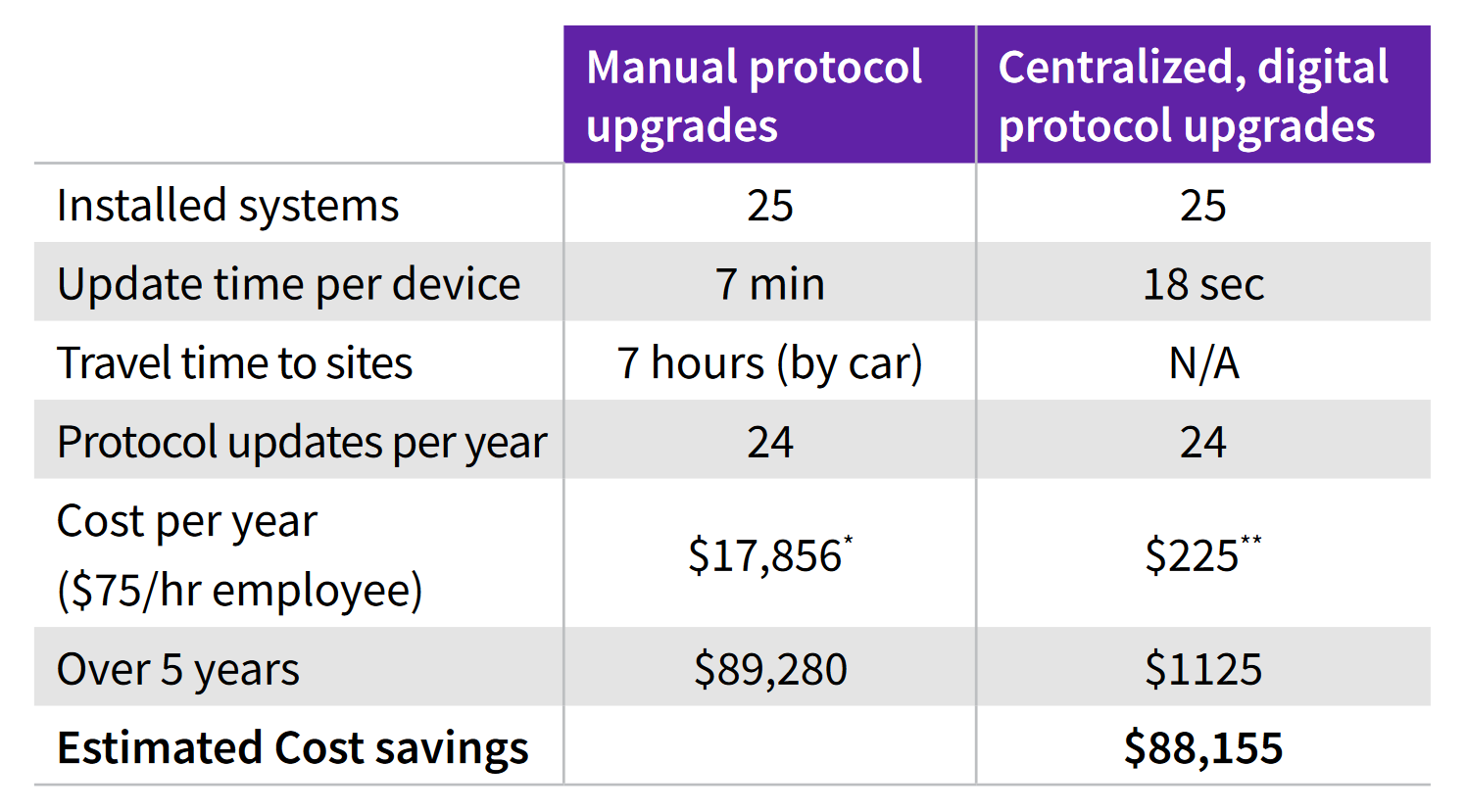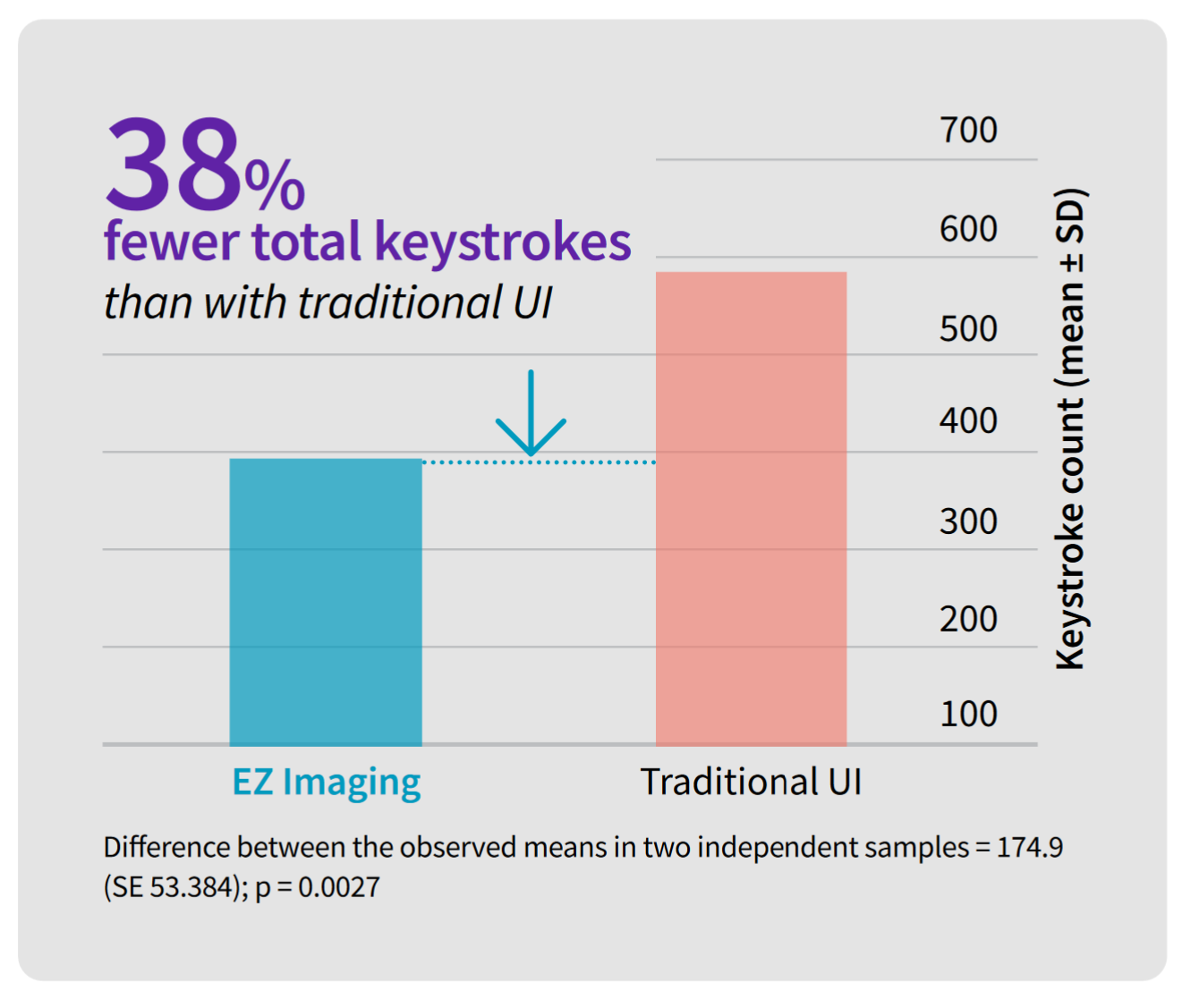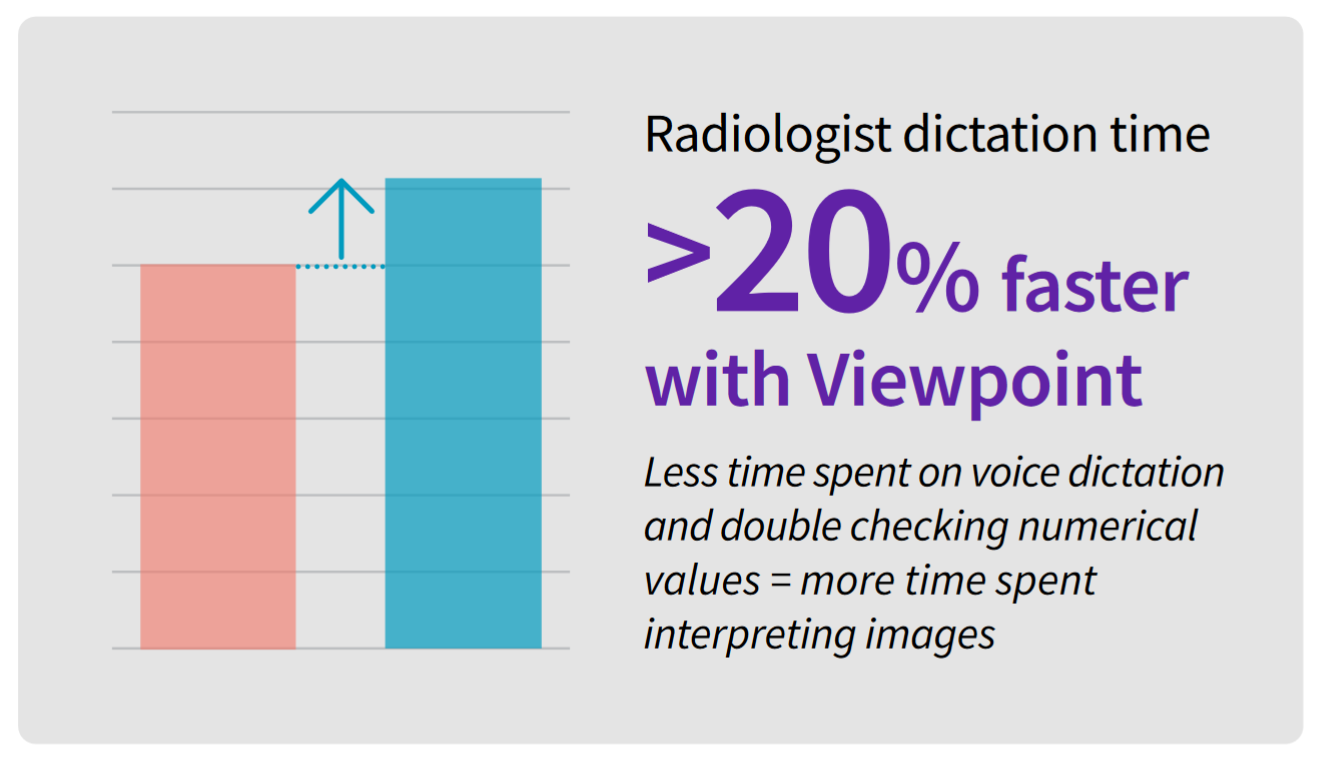How fleet standardization and digitization may address your staffing, efficiency, and revenue challenges
Most healthcare organizations are digitally transforming their ultrasound fleets to improve quality, efficiency, and workflow. Standardization is a key step on that journey.
No matter the size or geographical footprint of your organization, moving away from a mixed fleet toward greater standardization can offer multiple benefits in terms of care quality, efficiency, and economy.
One area with significant potential for operational gains is the ability to apply leading-edge digital technologies across your ultrasound fleet via enterprise solutions.
Challenge 1: Time lag in implementing clinical protocols across a large, multi-location fleet
Situation: The organization has 25 LOGIQ E10 systems across multiple sites. It takes the clinical ultrasound specialist weeks to visit all sites and manually implement new protocols. The chief radiologist would like the flexibility to issue protocol updates across the fleet at any time.
Opportunity: With centralized digital device management through Verisound™ Fleet, a manager can view, back up, and deploy LOGIQ E10 device configurations across the enterprise without leaving the building. Or even leaving their desk. They simply upload the new configuration to the Cloud and push an alert to the devices in the fleet to accept the changes.
It’s as simple as that. Instead of spending hours traveling from site to site updating protocols, a fleetwide protocol update takes just a few minutes. With the potential for significant cost savings:1
Challenge 2: Sonographer burnout, staffing shortages
Situation: Research suggests that 60 to 80% of your sonographers may be suffering from work-related musculoskeletal disorders (WRMSD) that affect their physical and emotional well-being, job satisfaction, and long-term employment.2,3,4 WRMSD challenges can add a significant financial burden to your organization.
Opportunity: EZ Imaging uses automation to help improve the ergonomics of patient set-up and scanning for sonographers. Its customizable probe pre-sets, simplified touch panel, and streamlined set-up reduce manual keystrokes by 38%, enabling sonographers to spend 32% less time per exam.6
In addition to its potential to help improve staff working conditions and reduce WRMSD risk, EZ Imaging may have a revenue impact, as seen in the following analysis of three of the most common types of ultrasound studies.1
Challenge 3: Ultrasound devices running inconsistent versions of clinical and security software
Situation: When new software releases and security patches are issued, ultrasound/biomedical staff must manually manage those updates across the fleet, a time-consuming process that can lead to implementation delays. Software updates/patches are typically installed on ultrasound devices 3-7 times per year, with each installation taking 70–90 minutes per device.7
Opportunity: With remote service updates through eDelivery, software is delivered “direct to device” for immediate access to updates and security patches. At the touch of a button, all devices have secure access to new software, digital licenses, security updates, bug fixes, and associated items. The result? Fewer disruptions to patient care. Greater certainty that systems are secure and performing optimally. Less downtime at the point of care. No need for on-site maintenance visits.
Challenge 4: Radiologist work overload and burnout
Situation: Burnout among radiologists is increasing globally, with the prevalence estimated as high as 82%, according to a recent study.8 Among the main contributing factors are heavier workloads, longer workdays, and requirements for faster report turnaround times.
Opportunity: Sophisticated digital technology can help reduce the reporting burden on overworked radiologists. ViewPoint™ 6 Structured Reporting with GE HealthCare LOGIQ ultrasound systems has been shown to significantly lessen the time that radiologists spend on dictation for two reasons: one, numerical values from the exam are automatically populated in the report, and two, standardized text is used throughout, reducing the need for the radiologist to reword sonographer observations.
ViewPoint 6’s easy-to-use exam documentation screen also helps sonographers reduce errors and save time. A study showed that sonographers using ViewPoint saved, on average, 4 minutes 42 seconds per exam9 compared to completing worksheets by hand. For an average-sized radiology department, this could save 20 hours of sonographer time per week.
Challenge 5: Less experienced sonographers
Situation: The health network has a high ultrasound caseload across multiple locations. The radiology manager wants to reduce repeat exams and increase quality and consistency across all sonographers. The sonographer staff is spread thin: as in many institutions, less-experienced sonographers surpass the number of seasoned practitioners. More than half the staff see at least one complex exam each day.10
Opportunity: Digital Expert Connect enables real-time exam support from staff experts anytime, anywhere. Remote scan assistance with live support can help with image acquisition and prevent repeat scans while also serving as a teaching tool that can boost staff confidence and productivity. This collaboration tool can help radiology departments standardize care, reduce variations, save time, and make optimal use of staff resources.
Benefits across your enterprise
With LOGIQ ultrasound and the fleet-wide digital tools described above, healthcare organizations have the potential to significantly improve operations for all stakeholders across the enterprise, helping:
Ultrasound specialists and managers to reduce travel time and costs by implementing new ultrasound protocols and software fleetwide at the push of a button.
Radiologists to reduce exam reporting time and tedium, and increase work satisfaction.
Sonographers to scan more ergonomically with fewer manual steps, and produce consistent exams, standardized to the same protocols, from any machine in the fleet.
Administrators to improve staff satisfaction and increase revenue opportunities.
Patients to receive optimized ultrasound care at all your locations.
Download the full article here
References:
1. This information is provided for illustrative purposes only. Each institution’s operational data is unique, and results may vary. The general information contained in this illustration is presented in good faith but with no representation regarding its validity for your situation.
2. McDonald M, Salisbury H. Physical Activity, Exercise, and Musculoskeletal Disorders in Sonographers. Journal of Diagnostic Medical Sonography. 2019;35(4):305-315. doi:10.1177/8756479319843883.
3. Hogan, A. (2021). Pain Levels and Injuries by Sonographic Specialty: A Research Study. Journal of Diagnostic Medical Sonography. https://doi.org/10.1177/87564793211044122.
4. Barros-Gomes, S., Orme, N., Nhola, L. F., et. al. (2019). Characteristics and Consequences of Work-Related Musculoskeletal Pain among Cardiac Sonographers Compared with Peer Employees: A Multisite Cross-Sectional Study. Journal of the American Society of Echocardiography: Official Publication of the American Society of Echocardiography,32(9), 1138-1146. https://doi.org/10.1016/j.echo.2019.04.416.
5. Sound Ergonomics: Cost of injury. https://www.soundergonomics.com/cost-of-injury.html. Accessed October 27, 2021.
6. Based on a GE conducted study of 9 sonographers in the US testing two scenarios; C1-6 (Gyn/Abdomen/Renal) and IC5-9 (Gyn/OB1) Scenario, where each participant performed the scanning 10 times individually on both GE’s innovative platform and traditional user interface. These results are for illustrative purposes only and represent a specific experience by limited number of individuals; actual results could vary depending upon clinical practice, scanning protocols, and circumstances.
7. GE HealthCare Customer Survey, 2019.
8. Fawzy, N.A., Tahir, M.J., Saeed, A., et. Al. (2023). Incidence and factors associated with burnout in radiologists: A systematic review. Eur J Radiol Open. doi: 10.1016/j.ejro.2023.100530
9. An internal, side-by-side comparison study was performed by GE HealthCare. Five sonographers completed sonographer worksheets manually and with ViewPoint 6 for five exam types; Abdomen, Carotid, Lower Extremity Arterial, Pelvic, and Thyroid. Both manual and digital sonographer worksheets required the same types and number of sonographer inputs. The average time saved by utilizing ViewPoint 6 for digital sonographer worksheets was 4 minutes and 42 seconds per exam. Assuming 10 exams performed by a sonographer per day. Assuming a staff of 5 FTE employees each performing 10 exams a day. Illustrative example. Actual results will vary based on your institution’s circumstances.
10. GE HealthCare Sonographer Customer Survey, 2022.
Products mentioned in the material may be subject to government regulations and may not be available in all countries. Shipment and effective sale can only occur after approval from the regulator. Please check with local GE HealthCare representative for details.
© 2024 GE HealthCare. LOGIQ, ViewPoint and Verisound are trademarks of GE HealthCare. GE is a trademark of General Electric Company used under trademark license.
May 2024
JB28978XX








